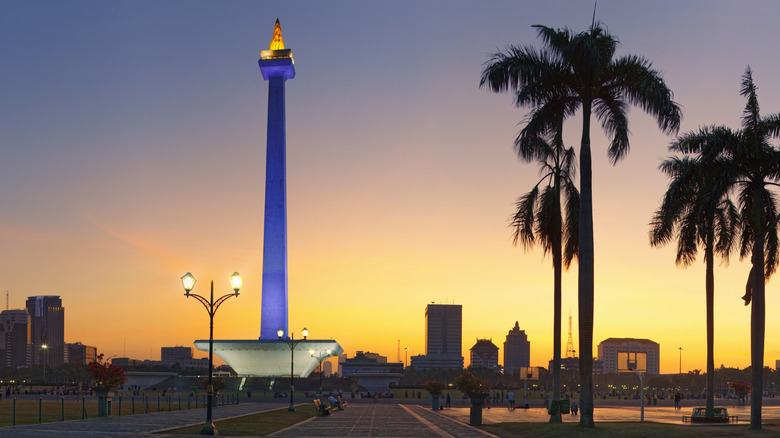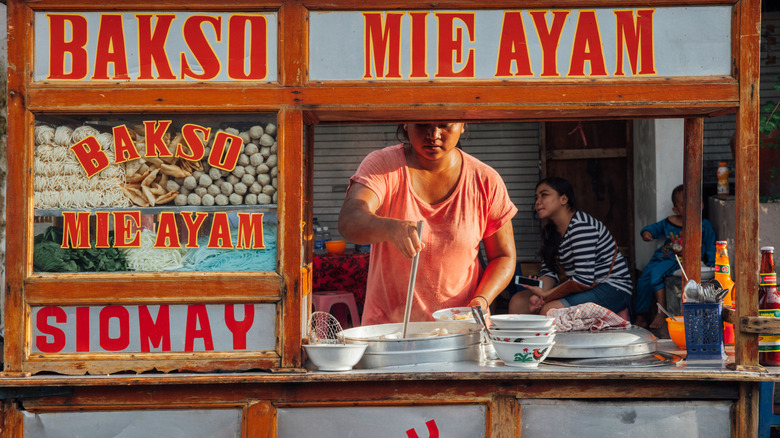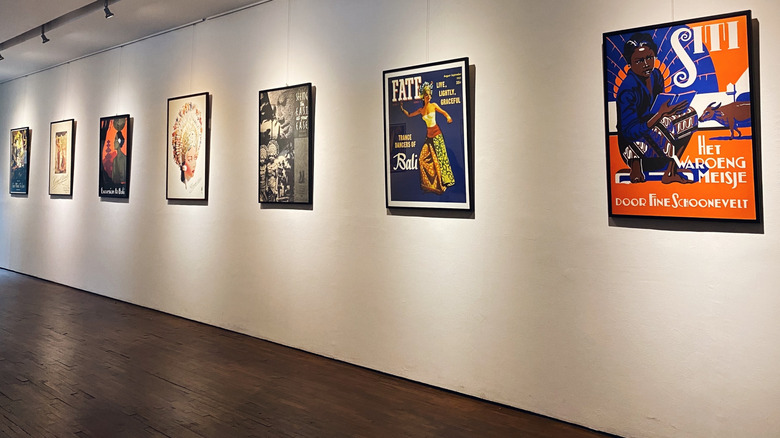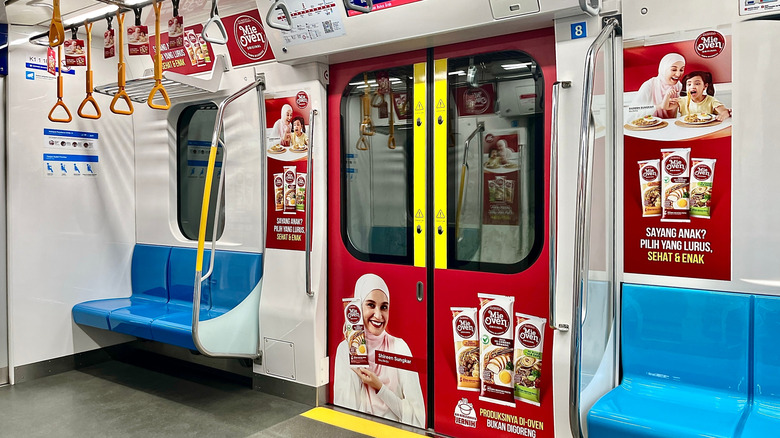The Largest Metropolis In Southeast Asia Is An Under-The-Radar Haven For Foodies And Art Lovers
Mention popular travel hotspots in Southeast Asia and bustling Saigon, the white sand beaches of Bali, or Singapore — "a city in a garden" — might instantly come to mind. Although these destinations outshine Jakarta in the tourist spotlight, the capital of Indonesia (the world's most generous country) is affordable, tolerant, and welcoming, especially to visitors. The aptly named "Big Durian" has an assortment of delicious local food, cafés, and a burgeoning arts scene. That being said, the city is sometimes a challenge to visit; noise, chaotic traffic, unpredictable weather, limited English spoken outside of tourist attractions, and, at times, a lingering layer of air pollution make the city taxing. However, travelers who peel back the thorny exterior will be rewarded with an authentic taste of the food, people, and many cultures of Indonesia.
Jakarta's history makes the city incredibly unique; in just 80 years, it has morphed from Batavia, a well-planned, yet far-flung Dutch Colonial outpost, to the capital of the fourth-most populous nation. Jakarta itself is not a large tourist destination, but travelers who dig deeper will find a great food and art scene as well as a tremendous hidden wealth of fantastic local beach getaways in the Thousand Islands to the north.
Most visitors to Indonesia (including Bali) who are not citizens of the 11 ASEAN member states will need to apply for a tourist visa in advance online or upon arrival. Travelers who get a B1 tourist visa in advance from the Indonesian Ministry of Immigration and Corrections can go through smart gates at Jakarta's Soekarno-Hatta International Airport, saving time. If you decide to apply in advance, be sure to use the official website. If you apply at the airport, bring 500,000 Indonesian Rupiah (about $30 to $35) to ease the payment process.
Different tastes across the city
The Jakarta metropolitan area has over 33 million people and is one of the most densely populated cities in the world. Similar to New York or Silicon Valley, Jakarta has long been Indonesia's primary economic magnet, pulling Indonesians (and their local foods) from all parts of the archipelago to the city. For travelers, this means an incredible variety of different foods from all over Indonesia, including authentic takes on some of the country's best dishes and restaurants.
Three of the best areas to visit to sample local food are Kebon Kacang in Central Jakarta, Glodok in West Jakarta, and Cipete (pronounced chi-peh-tay) in South Jakarta. In terms of authenticity and accessibility, these three areas are generally safe bets. Glodok is the largest Chinatown in Indonesia, which is still very local in terms of residents and food. Cipete, in Jakarta's South, is easy to access from the Cipete Raya MRT station and has some authentic rendang, a dish that was listed by CNN in 2021 as one of the world's 50 best foods. While in the area, stroll through the relaxing green space of Urban Forest Cipete and grab a coffee at one of the local cafés.
Tucked away behind Plaza Indonesia Mall is Kebon Kacang. Although the area is quieter during the day, after dark it transforms into a collection of vendors selling delicious Indonesian dishes from across the archipelago including nasi goreng, bakso, sate kambing, and bakwan. Travelers who want to sample many types of street food in Indonesia should consider the CDC food and drink guidelines (like avoiding raw foods or dishes that are cooked but not hot), as hygiene levels can vary considerably in each neighborhood and across the city.
After grabbing a bite, explore Jakarta's artsy side
Although Jakarta doesn't have the same level of recognition internationally as Ubud, Bali's artsy neighborhood in the jungle, the city is fast becoming one of Southeast Asia's art hot spots, especially for modern art and music. Jakarta has dozens of small photography and art galleries spread across the city, making it difficult to see all of them in a few days. Some major highlights are Museum MACAN, (Museum of Modern and Contemporary Art Nusantara), the National Gallery of Indonesia, and Dia.lo.gue, a café and modern art studio with rotating exhibitions and many works from up-and-coming artists.
For travelers interested in traditional Indonesian art, the National Museum of Indonesia is a must-see. Here, visitors can dive into Indonesia's past in terms of art, human development, as well as the history of Southeast Asia. The museum is closed on Mondays and is located directly across from the National Monument (MONAS) in the center of Jakarta. Furthermore, don't miss Museum Wayang, a space dedicated to traditional Javanese puppets located in Kota Tua, the Old Quarter of the city. Travelers who visit Kota Tua in the evenings and on the weekends will often see street performers and local bands playing.
Being the largest city in the country, Jakarta has a vibrant music scene, largely concentrated in South Jakarta. Hot spots include Gunawarman and Senopati for live music and M Bloc Space for local events. Travelers who are looking to enjoy a music festival should time their visits to coincide with either the Java Jazz Festival or Hammersonic.
Tips for getting around Jakarta
One of the biggest problems travelers will face in Jakarta is the sheer amount of traffic in the city. Traveling a few miles across the city in the evenings during the peak rush hour — between 4 p.m. and 8 p.m. — can take a couple of hours, especially on Friday nights. To avoid this problem, travelers should choose a hotel near one of the city's MRT (subway) stations or LRT (light rail transit) stations as a base to get around the city during high traffic periods.
Jakarta's mix of public and private transportation options and policies are confusing for both locals and visitors alike. Indonesians use Grab and Gojek (local versions of Uber) and Bluebird (a reputable local taxi company) to get around. However, Jakarta's car-free periods across much of the city center on Sunday mornings and complicated odd-even license plate policy for private vehicles can make taking private transportation a challenge. Official taxis, such as Bluebird, are exempt from this rule, but sitting in traffic will result in the taxi meter rising and a more expensive fare. If you visit Jakarta, be aware of common travel scams before you go (especially those related to transportation), and protect yourself by only booking rides through official apps.



